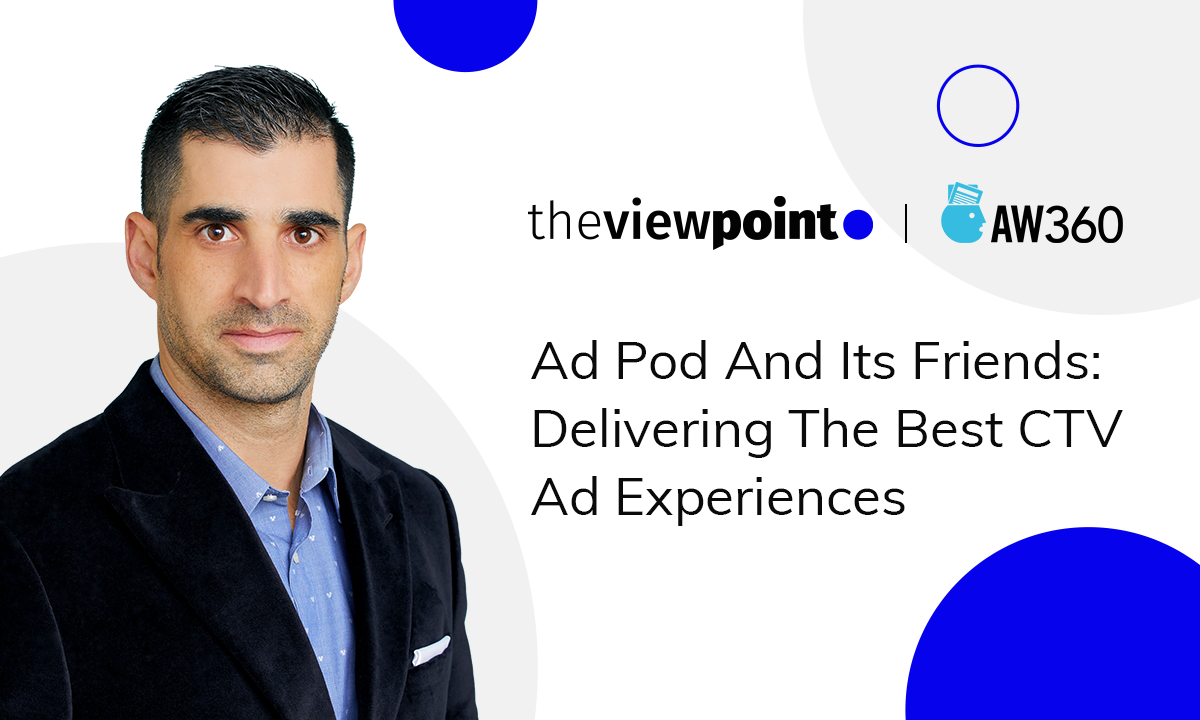
How Tech Providers Prevent CTV Ad Fraud by Filtering Out Invalid Traffic
Invalid traffic (IVT) poses a serious problem within today’s advertising ecosystem, and it’s one that we as an industry need to be tackling head-on. Even though IVT isn’t a new problem within our industry, it’s more relevant than ever given the tremendous growth we’re seeing within the CTV space—and the tremendous challenges that IVT poses within the CTV space specifically.
Here at TheViewPoint, we take IVT seriously—and we want our partners and clients to do the same. That all starts with education and understanding. So let’s dig into what publishers and advertisers need to know about IVT, particularly within the growing CTV space.
What Is IVT and Why Should You Care?
IVT refers to ad traffic that comes from a non-human source. Sometimes this traffic might be somewhat benign in nature, whereas other traffic is perpetrated by malicious bots that view and click on ads to inflate conversion numbers, resulting in wasted advertiser spend. Overall, IVT breaks down into two categories:
General invalid traffic (GIVT): GIVT refers to the often-benign sources of traffic generated by known industry crawlers, such as search engine bots, as well as traffic generated by bots that are obviously behaving unlike humans (e.g., bouncing among websites every few seconds for many hours on end). In general, GIVT is fairly easy to spot and can be screened out with some basic precautions.
Sophisticated invalid traffic (SIVT): On the flip side, there’s SIVT, which (as the name suggests) is more difficult to detect and filter because bad actors are intentionally working to avoid raising red flags. These opportunistic fraudsters are trying to blend in with legitimate inventory in hopes of turning a quick buck, and they’re particularly fond of going after high-CPM inventory where demand exceeds supply—as is the case in CTV.
IVT bots typically infiltrate publishers via third-party integrations that open a publisher’s property to other sources—including cybercriminals looking to inflate traffic numbers and cash in on the clicks. Programmatically traded channels are particularly vulnerable to fraudsters and bots, and the resulting ad fraud obscures transparency of the programmatic supply chain and damages the trust within the entire ecosystem.
Within the CTV space, estimates vary when it comes to exactly how much IVT and ad fraud are costing advertisers on an annual basis, with projections ranging from $144 million to $240 million in 2022. According to one report, nearly 1 in 5 (18 percent) CTV ads in unprotected programmatic inventory were IVT or fraud in Q4 2021. So what does this mean for the industry?
For publishers: Risks of IVT and fraud on the supply side of CTV are considerable. They include not only diminished value and reputation of a publisher’s inventory, but also lower-performing impressions and wasted resources in terms of time, people, technology, and money when it comes to fighting fraud once it enters a platform.
For advertisers: On the demand side, the risks of IVT and fraud include wasted ad spend and a low return on ad spend, due to the fact that many of an advertiser’s placements are not being served to actual humans.
The larger threat of IVT, beyond the individual damage to publishers and advertisers, has to do with the industry at a macro level. Research has found that 37 percent of U.S. agency and marketing professionals rank viewability and nonhuman traffic fraud as the worst aspect of programmatic ad fraud. The CTV advertising opportunity today is tremendous and offers significant value for all parties in the ecosystem—but the damage that IVT and ad fraud is doing to trust can’t be understated. IVT and ad fraud represent a serious threat to what could and should be a strong continued growth trajectory with the potential to benefit all parties—publishers, advertisers and tech providers alike.
How Are Tech Providers Filtering IVT and Preventing Ad Fraud?
When it comes to reducing the concerns associated with IVT and programmatic ad fraud, publishers’ and advertisers’ tech providers should be the front line of defense on filtering IVT and preventing ad fraud. Here’s how reputable tech providers are tackling the issues today:
Avoiding low-quality and untrustworthy partners
The dangers of IVT don’t typically arise directly from a publisher’s or advertiser’s third-party provider. They arise from the fourth- and fifth-party providers with whom those companies integrate in order to deliver the scale and services their clients require. As such, establishing and enforcing the absolute highest standards and requirements for those partners is of the utmost importance when it comes to preventing IVT and ad fraud.
Adopting relevant IAB standards
As the CTV space continues to mature, industry organizations such as IAB are continuing to roll out new tools and standards to help instill safety within the CTV supply chain, as well as trust and transparency among publishers and advertisers. Today’s most reputable and trustworthy tech providers are the ones that are not only adopting these standards as they’re formalized, but also actively helping to ensure new protocols and standards are meeting the needs of their clients.
Partnering with leading software providers
Finally (and perhaps most importantly), when it comes to IVT and fraud within the CTV space, today’s tech providers should be partnering with leading software providers whose solutions can measure a wide variety of signals to determine whether traffic is valid or invalid. For example, here at TheViewPoint, we recently partnered with HUMAN to use their software to detect and mitigate IVT and ad fraud, ensuring we can protect our clients’ inventory and ad dollars from potential threats and risk.
By working with tech partners that can ensure low IVT rates, publishers and advertisers alike gain significant benefits. Publishers are able to protect the reputation of their businesses and their inventory, while simultaneously improving inventory value, increasing performance for clients, and driving increased revenue from demand partners. Meanwhile, advertisers are able to rest easy in the knowledge that their ads are being served to real humans and their return on ad spend is, as a result, being maximized.
For as long as money is flowing through the world of advertising and ad tech, there will be bad actors in the mix, looking to turn a quick buck in fast-growing spaces like CTV. By working with responsible tech providers, publishers and advertisers can ensure they’re staying one step ahead and protecting their valuable inventory and investments from reputational and revenue harm.
Related
Programmatic TV Tax Day is Not Just April 15. It's Every Day
This blog examines the significant "AdTech tax" in Connected TV advertising, advocating for Tatari's direct integration with publishers to bypass hidden fees, resulting in substantial cost savings and enhanced transparency.
Read more
Ad Pod And its Friends: Delivering the Best CTV Ad Experiences
Aiming to stand out from the crowd and surpass consumers’ expectations, CTV advertisers have to be allied with publishers and very savvy at applying innovative advertising techniques, like frequency capping, competitive ad separation, and deduplication. Though still raising a lot of eyebrows, these tools have already become the next big thing in the advertising world. So, before diving deep into the details of ad pod management, let’s take a sneak peek behind the scenes of modern CTV play.
Read more
Everything You Need to Know About Real-Time Bidding
As programmatic advertising is gaining momentum, RTB or real-time bidding comes in. In fact, most platforms in ad tech today are RTB enabled. But what does that actually mean? What is an RTB platform and why is it so important for digital marketers? Let’s get the answers to these questions and more.
Read more


